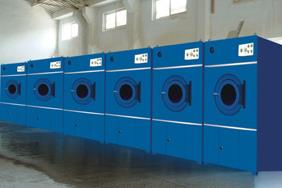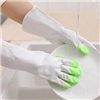Latex glove manufacturing processes involve several steps to produce high-quality disposable gloves used in various industries such as healthcare, food processing, laboratory work, and more. Here’s an overview of the typical latex glove manufacturing process:
- Raw Material Preparation: The main raw material for latex gloves is natural rubber latex, which is derived from the sap of the rubber tree (Hevea brasiliensis). The latex is collected from the tree through a process called “tapping.” The collected latex is then refined and stabilized to ensure consistent quality.
- Compounding: In this step, various additives are mixed with the refined latex to enhance the properties of the gloves. These additives may include accelerators, vulcanizing agents, antioxidants, and colorants. The exact formulation depends on the desired characteristics of the gloves, such as strength, flexibility, and color.
- Latex Dipping: The latex dipping process is the heart of glove manufacturing. First, ceramic or metal formers shaped like hands are cleaned and coated with a coagulant, which helps the latex stick to the formers. The formers are then dipped into the compounded latex, and a thin film of latex adheres to the formers’ surface. The thickness of the latex film determines the gloves’ weight and gauge.
- Vulcanization: After the dipping process, the latex-coated formers move through an oven where the gloves undergo vulcanization. This process involves heating the latex at a specific temperature to strengthen the material and make it elastic. During vulcanization, the cross-linking of polymer chains occurs, giving the gloves their elasticity and durability.
- Leaching: Once vulcanization is complete, the gloves are removed from the formers. However, they still contain residual latex and other chemicals. To reduce allergenic proteins and remove excess additives, the gloves are soaked in a water bath, a process known as leaching.
- Drying: After leaching, the gloves are dried to remove moisture and bring them to their final form. This step ensures that the gloves are ready for further processing and packaging.
- Quality Control: Throughout the manufacturing process, rigorous quality control checks are performed to ensure that the gloves meet the required standards. Quality control includes testing for defects, thickness, tensile strength, elasticity, and other parameters.
- Powdering (Optional): In some cases, latex gloves are powdered with cornstarch or other inert materials to make them easier to don and doff. However, due to concerns about allergies and potential contamination, many modern gloves are powder-free.
- Packaging: The final step involves packaging the gloves for distribution. They are usually packed in boxes or dispensers, and each package contains a specific number of gloves, depending on the intended use.
It’s important to note that due to environmental concerns and increasing latex allergies, many manufacturers have shifted to producing synthetic alternatives to latex gloves, such as nitrile or vinyl gloves. These alternative materials offer similar properties but without the risk of latex allergies.
![]()















